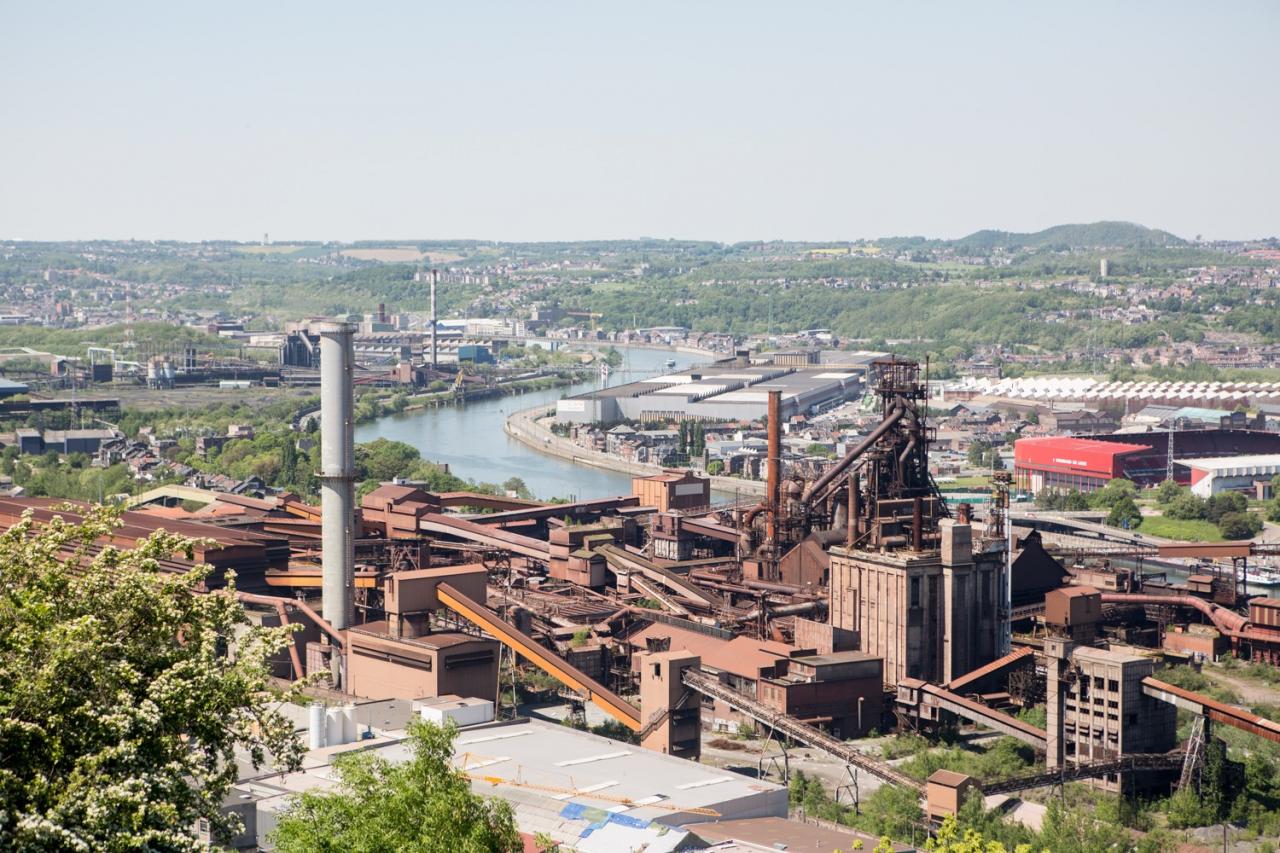
From prosperity to decline then to reconstruction
Bénédicte Borckmans, project coordinator for the ALT/BAU network in Seraing, reports on how the transfer process went in the Belgian city.
Seraing was just a village when John Cockerill moved there in 1817. John Cockerill, an English-born industrialist, became a prominent businessman in Belgium. He continued the family tradition of building wool-processing machinery and founded an ironworks. A few years after he moved to Seraing it had grown into a thriving and innovative working-class town attracting tens of thousands of workers and their families. In order for them to settle as close as possible to their place of work, small houses typical of the industrial basins of northern Europe were built with great success, as well as mansions for managers.
After 180 years of great prosperity, the industrial crisis took everything in its path, leaving neighborhoods in full decline.
Seraing then embarked on the implementation of a reconstruction plan. Public space and old industrial sites must be redeveloped in order to attract new investors and new job-creating activities.
The small working-class houses have deteriorated over time. The city leads by example by investing in dozens of renovation projects that it then amortized by the rental. And it works! Some owners are starting to renovate in turn. The dynamic is launched but it is not enough.
But how can we encourage and help owners to renovate their property? How can we fight against the real estate vacancy more and more present around the old industrial sites?
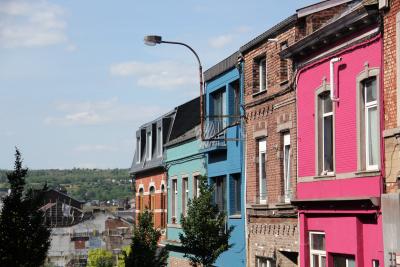
The Seraing Approach - Masterplan and Eriges
To answer these questions, the city counts on its Municipal Authority, ERIGES, which coordinates all the post-industrial requalification projects of the Seraing valley.
At ERIGES, we have always believed in the richness of the exchange of experiences between cities facing similar problems. Visits, meetings and welcoming representatives of other cities have regularly reinforced project studies in the past.
But the time to devote to discussions and above all the administrative constraints and reports linked to European projects are holding us usually back from joining the transnational programmes. Yet a project will eventually generate real interest.
URBACT Transfer Network
Do you remember our problem of housing to renovate and real estate vacancy? Well it looks like some German city, Chemnitz, which we never heard of, has a solution! So, let’s go!
Information and contacts made with the city leader and main expert, the contact goes well and the results of Chemnitz are encouraging. A first invitation to Chemnitz and meeting with the partners even before the official launch of the network confirms everything.
Seraing will be the first city to welcome partners for the network kick off meeting. That leaves us little time for the organization. Fortunately, here too we can count on the excellent work of our Lead Expert and Lead Partner to guide us in the organization and together build the program of the two days of work and visits.
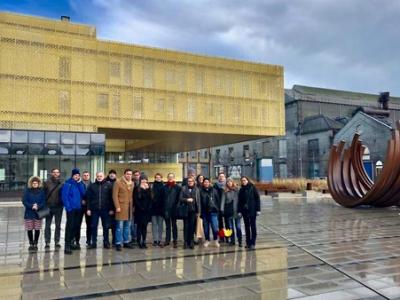
One of the first actions to take when launching the network will be to set up a local working group. For us, it was simple because we already worked two years ago with a group of experts for an analysis of the real estate market in Seraing. Nevertheless, after two meetings with our 26 experts, it seemed to us more appropriate to reduce the group to the main actors and decision makers.
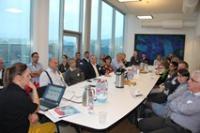
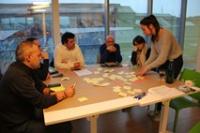
ALT/BAU network – Give unused residential buildings a second chance
Following the example of Chemnitz, Seraing embarked on the fight against vacant real estate
Here are the main actions we have taken so far:
1. Target the intervention district(s) most affected by real estate vacancy. Seek advice from the city's housing / urbanism services to help you.
2. Carry out an inventory of vacant housing in the targeted streets. We did this with support of a student who did a wonderful job and listed 352 unoccupied buildings. Thank you, Sarah! Do not hesitate to use an application for a digital version of your inventory (ex: INPUT)
3. Classify the inventoried buildings into three or four categories defining their condition and the necessary work to be done for their rehabilitation (ex: ruin, heavy work, light work, good condition)
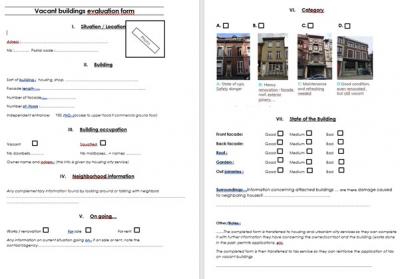
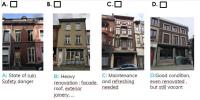
4. Complete the field information with the information held by the housing and urbanism departments (contact details of the owner, renovations made in the past, etc.)
5. Launch a call for tenders to architects to carry out a renovation diagnosis on three properties from our inventory (on a voluntary basis by the owners).
6. Send a letter to owners along with a questionnaire on their situation. Invite them to contact us to receive help and let us know about their interest in a renovation diagnosis of their property.
7. Meet the owners who responded and advise / guide them on a case-by-case basis.
8. Consider with the city's housing service the creation of a specific service to advise owners to renovate and rehabilitate their vacant building: the “Seraing Housing Agency”.
And in the future:
- We will start with a service dedicated to owners of degraded and vacant buildings (housing and shops)
- We will then extend the service to everyone; owners, tenants, buyers, sellers, etc.
Notes for cities wishing to participate in international networks
Let’s not lie! Integrating a network requires being able to free up time. Administrative and budgetary follow-up, communication requirements, organization of local work, not to mention travel to partners. Count at least on the equivalent of 1/2 working time.
Target the network to which you are going to join. This must be a project that you already have experience with. In a win-win exchange, each city brings its own good practice. All of the best practices create the richness of the network.
If, like ERIGES, you are an independent structure from the city, make sure you have the support of its leaders to help you in the future implementation of your project.
A good network is a well-managed network. Find out as much as possible about the project leader and the lead partner. These are your guides for the next two years. The success of the network rests in large part on their capacities as project managers.
Try to organize visits on foot or even by bicycle. Keep some time to show some of your city’s treasures and make them want to come back.
Better to have a small working group and more frequent meetings (minimum monthly) to help with decision-making. On the other hand, a group of experts can be consulted from time to time for more specific questions.
Postscript: Seraing and Eriges will continue to work in another transfer network - Vilawatt. The UIA and URBACT pilot network is about innovative local public-private-citizen partnership for energy governance.

written by
Bénédicte Borckmans
URBACT Project Manager
at Eriges, Seraing

